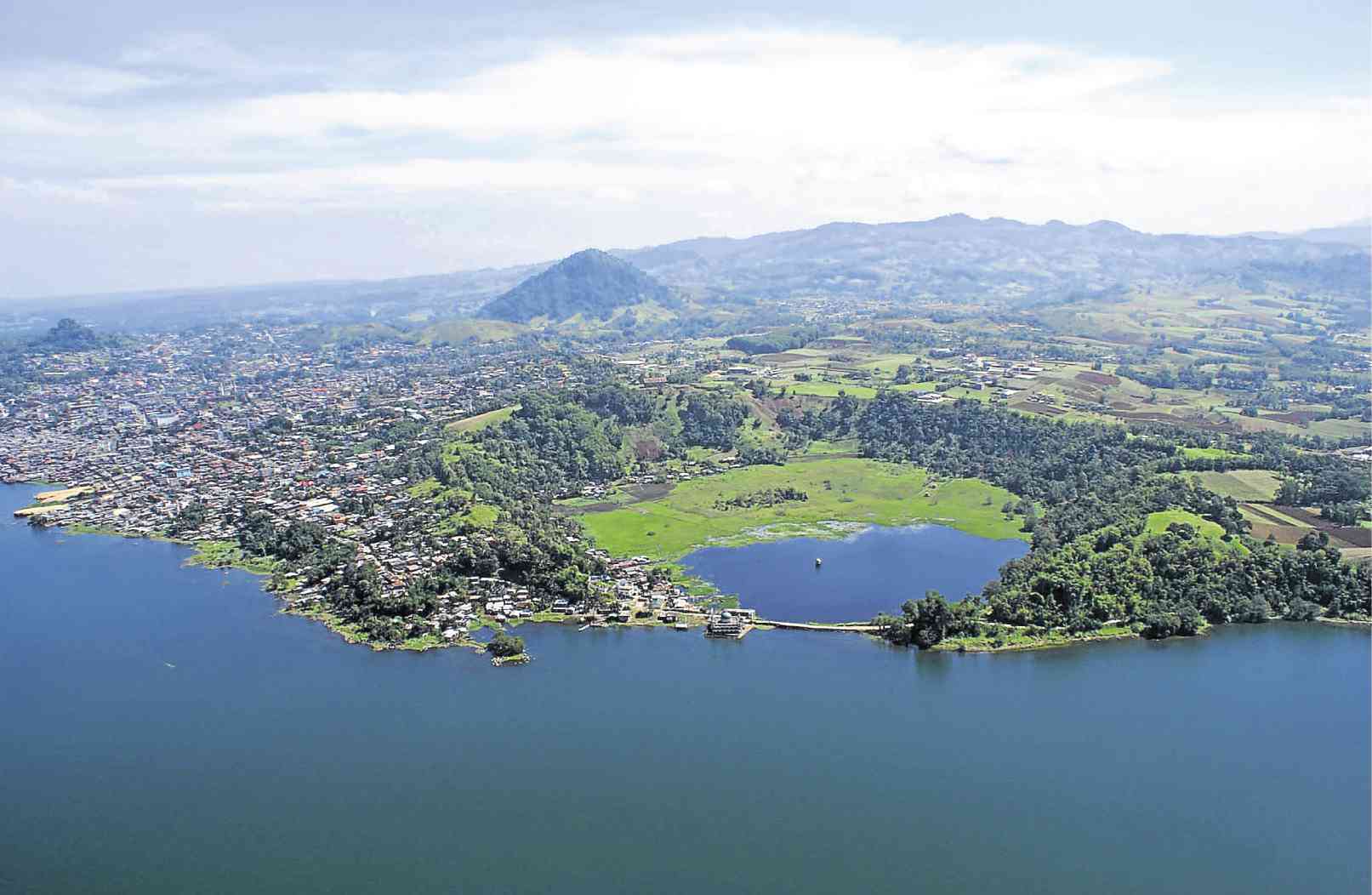El Niño taking toll on Lake Lanao
MARAWI CITY—The extreme heat brought about by the El Niño phenomenon is taking its toll on Lake Lanao, the country’s second-largest inland body of water.
The Department of Environment and Natural Resources in the Autonomous Region in Muslim Mindanao (DENR-ARMM) said the water level in Lake Lanao, now at 698 meters above sea level (masl), was nearing the critical level of 690 masl. The lake’s normal water level is 701.10 masl.
Last week, outgoing Lanao del Sur Gov. Mamintal Adiong called on the national government to help review and improve lake management in the face of climate change.
DENR-ARMM Secretary Kahal Kedtag said surrounding forest trees sucked the lake water because of the lack of rain due to the dry spell.
Local officials and residents said biological deterioration was also caused by increasing level of pollution and man-made hydrological alteration in the lake, like dams, resulting in a diminishing water runoff.
Lanao del Sur Assemblyman Ziaur-Rahman Adiong said these environmental factors adversely affected the lake’s ecological balance and caused a “decrease in the diversity of fish species and the catch of subsistence fishermen, making life more difficult [for them].”
The National Power Corp. attributed the power supply problem in Mindanao to the drop in Lake Lanao’s water level.
In a press statement, the Mindanao Power Monitoring Committee (MPMC) said the lake’s water level was recorded at 699.26 masl in the past few months, while the minimum operating level was 699.15 masl.
Water from the lake feeds at least seven Agus hydropower plants. The low water level caused by the drought worsened the problem with some of the plants that were already not performing as well as expected because of neglect and non-maintenance.
The hydropower plants, including the Pulangi in Bukidnon, have a capacity of 982 megawatts. As a result of El Niño, power generation has dropped to 108 MW.
Rotational brownouts
The Davao Light and Power Co. blamed the five-hour rotational brownouts in Davao City to the recent shutdown of two Agus plants and one of the units of the Therma South Inc. coal-fired power plant.
Currently, key Central Mindanao cities suffer 3-4 hours of power outages every day.
Recent bombings of towers of the National Grid Corp. of the Philippines (NGCP) caused more power outages in Central Mindanao provinces.
Private and cooperative power providers have to buy limited but more expensive power generated by independent private producers to meet their requirements.
NGCP said Mindanao already had a power shortfall of 248 MW.
Distribution utilities and electric cooperatives would have to adopt energy-saving measures like “voluntary load curtailment, activation of the Interruptible Load Program and tapping of embedded modular generator sets,” it said in a statement.
A study by the Southeast Asian Fisheries Development Council said other possible effects of lake water level fluctuation include:
Planting rice in lowland areas in the towns of Ramain, Ditsaan, Tamparan, Mulondo, Masiu and Taraka would no longer be feasible;
Rain-fed areas were no longer suited for rice farming from January to May;
Farmers would have to shift to corn during those months and plant rice from June to November; and
Ramain, Taraka, Gata and Masiu Rivers might no longer be navigable due to shallow waters, which could increase the cost of transporting people and goods.
Other income sources
Samina Linogaman, 55, of the Patani People’s Organization here, said women had resorted to selling home-cooked meals and other food items, decorative cloth and liquid soap to augment their husbands’ incomes from small-scale “tilapia” culture.
Pollution is generally blamed on poor waste management and disposal. Domestic wastes, even sewage, end up in the lake.
But all is not lost for Lake Lanao, considered the largest source of hydropower generation in Mindanao and the main source of livelihood of lakeshore communities as it sustains small-scale fish culture.
The provincial government had constructed 19 lake and riverbank walls, five river control systems, 15 flood control systems, a drainage system, three riprap, one retaining wall, and two canal linings, Governor Adiong said.
Adiong said “the absence of clear, appropriate and community-supported institutional mechanism has contributed further to the unabated deterioration of Lake Lanao. The existing legal framework for Lake Lanao has been proven ineffective and [there is a need] for a better one.”
Another Adiong brother, Rep. Ansaruddin Adiong, said the government had three options to deal with the problem: devolve national powers and functions over Lake Lanao to the proposed Bangsamoro government; place its supervision and control under shared power with the regional autonomous government; and, by congressional act, create a Lake Lanao Management and Development Authority with autonomous administrative and operational powers to restore the lake’s indigenous fish habitats and diversity of species.















